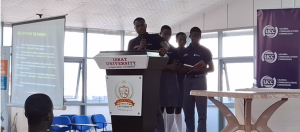Unit 9: Creating Submission Materials
Lesson Competencies
By the end of this lesson, you will be able to:
- Write documentation that is clear and easy to understand for different audiences.
- Break down complex processes into simple, scannable steps.
- Anticipate and provide solutions for common user problems.
Stage 1: Know Your Audience
Effective technical documentation is all about empathy. You need to write for your audience, whether they are technical experts, hobbyists, or end-users. This stage helps you practice translating complex jargon into plain, accessible language.
Activity 1: Jargon Buster
Match the technical term with the best plain-language explanation for a new user. Click on the correct explanation below.
What does “Dependencies” mean?
Stage 2: Structure Your Docs
A well-structured document is easy to read and navigate. Think of it like a roadmap for your project. This stage focuses on organizing information logically.
Activity 2: Problem-Solution Matcher
Drag and drop the “Problem” cards into the correct “Solution” cards. This helps you think about troubleshooting proactively.
Problems:
- App won’t start after installation.
- User gets “Permission Denied” error.
- App is running, but data isn’t saving.
Solutions:
- Check technical requirements (e.g., Node.js version).
- Explain how to set file permissions.
- Confirm database connection is active.
Stage 3: The Writing Process
Now that you understand your audience and how to structure your content, it’s time to write! This stage is a brief, hands-on practice for creating a specific section of documentation.
Activity 3: The Usage Guide Writer
Write a short “Usage” section for a simple app. The app is a command-line tool called image-cli that resizes images. Your guide should include a code snippet and brief instructions.





